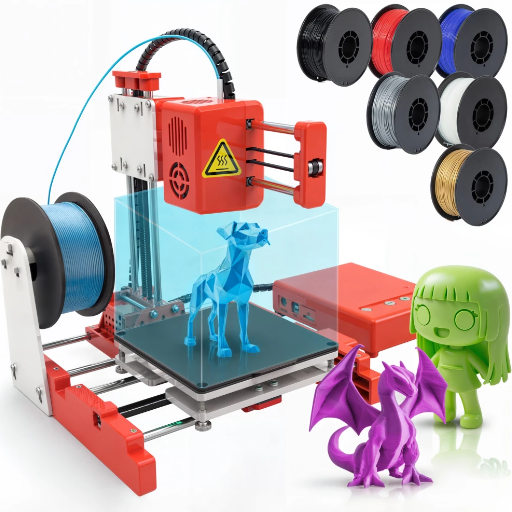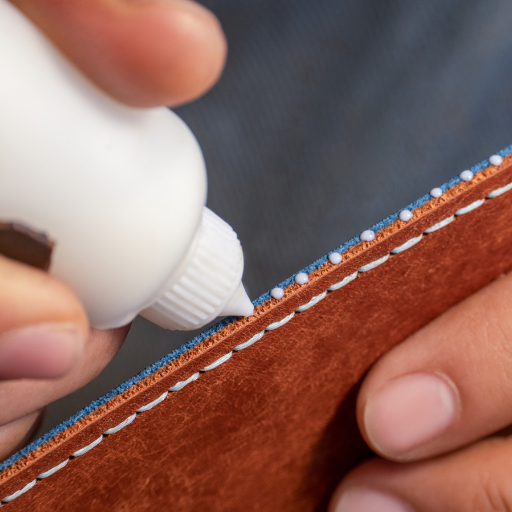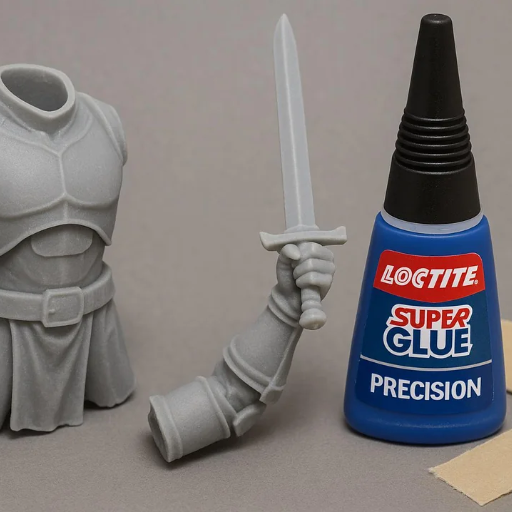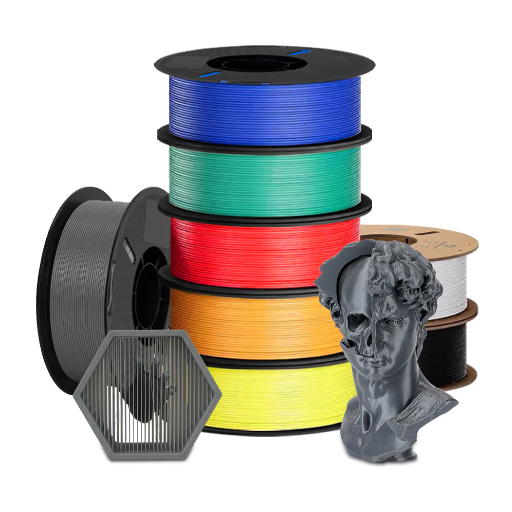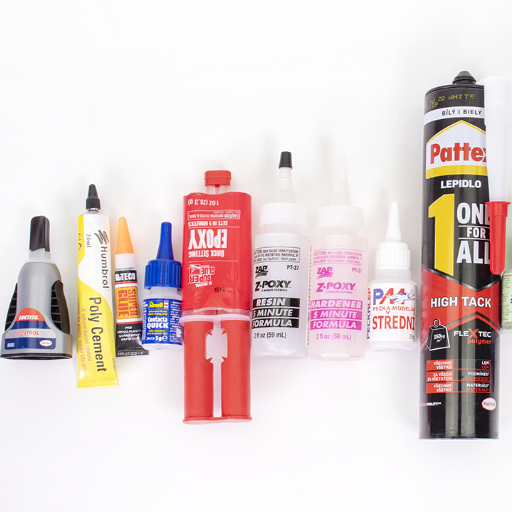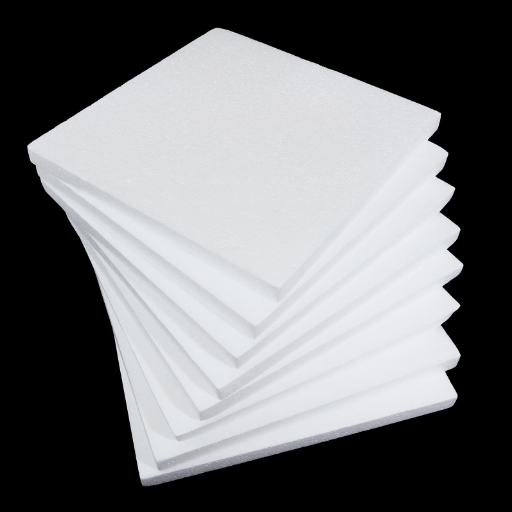Loctite is one of the most recognized brands when it comes to super glue, an adhesive that is frequently utilized to bond multiple materials. Having knowledge on how Loctite super glue works with various surfaces is critical whether you are fixing broken items around the house, engaged in industrial activities, or participating in DIY projects. This discussion will delve into super glue along with other types of adhesives highlighting its features, actions, and how it works with various substances such as plastics, metals, wood, and ceramics. You’ll also walk away from this article understanding the precision application of Loctite super glue and receiving insight on how to better manage the super glue to suit all of your requirements, which means that you will be empowered with knowledge regardless of whether you’re an inexperienced user or a seasoned user. This guide aims to cater for everyone, novice and expert alike, equipping them with the understanding necessary for bonding tasks.
What is Loctite Super Glue and how does it work?

Loctite Super Glue is a fast-acting, high-strength adhesive designed for bonding a wide variety of materials, including plastic, metal, wood, ceramic, and more. It is composed of cyanoacrylate, a quick-drying compound that creates a durable and long-lasting bond when exposed to moisture in the air. The glue works through a process of polymerization, where the cyanoacrylate molecules rapidly form a strong, rigid structure upon contact with surfaces, ensuring a reliable and efficient adhesive solution for various applications.
Understanding cyanoacrylate adhesives
Cyanoacrylate adhesives, commonly known as super glues, are widely used in a variety of industries due to their versatility and effectiveness. These adhesives excel in applications requiring precision and quick bonding, such as electronics, medical devices, woodworking, and even in automotive repairs. They are particularly valued for their ability to bond dissimilar materials effortlessly, like metal to plastic or rubber to glass.
The advantages of cyanoacrylate adhesives include their fast curing time, usually within seconds, and their remarkable bonding strength. They eliminate the need for clamps or prolonged drying, making them highly efficient for both industrial and household use. Additionally, these adhesives are resistant to temperature fluctuations and environmental factors, ensuring durability under various conditions. However, surface preparation is essential, as clean, dry surfaces ensure optimal adhesion and performance.
Types of Loctite Super Glue: Liquid vs. Gel
Both offerings of Loctite Super Glue come in liquid and gel forms, each appropriate for certain tasks and materials. Liquid super glue works best in very specific applications under which fiting surfaces need to be joined. For such uses, it spreads very fast and can fit into any small openings. It is very helpful for different materials like plastic, metal, or wood, and especially for tasks where the seal needs to be unseen.
Super glue gel is thicker than its counterpart and does not drip. Thus, it can be used on vertical or upside-down surfaces, as well as on porous materials like fabrics and leather. Because of its properties, it is easier to control during application, which means lesser chances of getting side surfaces dirty, making it appropriate for uneven or flexible surfaces. Both types are characterized by very quick bond forming in addition to very strong bonds, so the deciding factor is the requirements of the project at hand and the materials used.
The science behind instant bonding
The remarkable ability of super glue to form such strong bonds so quickly lies in its main ingredient—cyanoacrylate. This compound reacts almost instantly with moisture, which is naturally present on most surfaces and even in the air. When cyanoacrylate comes into contact with water, it undergoes a chemical reaction called anionic polymerization. This reaction causes the glue to harden rapidly as the molecules link together to form long, strong polymer chains.
The speed and strength of this process make super glue highly effective, but it also means that proper preparation is essential. A clean, dry surface ensures better adhesion by reducing interference from oils or dirt. Additionally, the ambient humidity plays a role; higher moisture levels typically lead to faster curing times. These scientific principles are what make super glue a reliable and versatile adhesive for numerous applications.
How to properly apply Loctite Super Glue for the best results?

Prepare the Surface – Ensure the surfaces to be bonded are clean, dry, and free of dust, grease, or oils. Use a cloth or mild cleaner if necessary to remove impurities.
Apply a Small Amount – Dispense a minimal quantity of Loctite Super Glue onto one surface. Avoid overapplication, as excess adhesive can slow the curing process and reduce bond strength.
Join the Surfaces – Press the surfaces together immediately and hold firmly for 10-30 seconds. Proper alignment is crucial, as adjustments are difficult once the glue sets.
Allow to Cure – Leave the bonded item undisturbed for at least one hour to achieve maximum strength. For optimal results, allow 24 hours for complete curing.
Store Properly – After use, clean the nozzle, tightly seal the cap, and store the glue in a cool, dry place to maintain its effectiveness.
Surface preparation techniques
Clean the Surface – Remove dirt, grease, dust, and any contaminants using an appropriate cleaner such as isopropyl alcohol, which is effective for most materials. Avoid cleaners leaving residue, as this can weaken the bond.
Dry Thoroughly – Surfaces must be completely dry before applying adhesive. Trapped moisture can compromise bonding strength and cure time.
Smooth or Roughen Surfaces– For non-porous materials like glass or metal, slightly roughen the surface with fine-grit sandpaper to increase adhesion. Porous surfaces, such as wood, often provide enough grip naturally.
Test for Compatibility – Check for any chemical incompatibility between the adhesive and surface material, which may reduce performance. Testing on a small area can save time and effort.
Avoid Contaminants During Application – Handle prepared surfaces carefully to prevent oils from hands or additional debris from affecting the bond.
By following these preparatory steps, you ensure better adhesive performance and a durable, lasting bond.
Application methods for different materials
Metal – For metal surfaces, ensure they are thoroughly cleaned and free from grease or rust. Sanding the area lightly can enhance adhesion. Apply the adhesive evenly and press the surfaces together firmly. Epoxy or polyurethane adhesives are often preferred for strong and long-lasting bonds.
Plastic – Use an adhesive suitable for the type of plastic, as some may require specific formulations such as cyanoacrylate or plastic weld adhesives. Roughen the surface with fine-grit sandpaper for better grip, and ensure no residues remain before applying the adhesive.
Wood – Wood bonds well with adhesives like PVA glue or polyurethane. Make sure the surface is clean, dry, and free from splinters. Clamp the pieces together for the recommended curing time to achieve the strongest bond.
Ceramic and Glass – Both materials demand precision and specialty adhesives like silicone or epoxy. Clean surfaces thoroughly with alcohol to remove oils or dust. Allow the adhesive to set completely before exposing the bond to stress.
Fabric – Use fabric-specific adhesives for a flexible and secure hold. Apply a thin layer along the edges or designated seams, and press firmly. Ensure the adhesive has fully dried before washing or using the fabric.
Each material requires particular attention to preparation and adhesive selection to guarantee optimal results. Always refer to the manufacturer’s guidelines for the adhesive being used.
Curing time and optimal bonding conditions
Curing time varies significantly based on the adhesive type and material being bonded. On average, most adhesives require 24-48 hours to achieve full strength, although fast-setting adhesives can bond surfaces securely within minutes. For optimal results, it is crucial to allow adhesives to cure in conditions specified by the manufacturer, such as a temperature range of 65-75°F and low humidity levels. Proper airflow can also aid the curing process. Always ensure both surfaces are clean, dry, and correctly aligned before curing begins.
What materials can Loctite Super Glue effectively bond?

Loctite Super Glue is highly versatile and can effectively bond a wide range of materials. These include plastics, ceramics, wood, rubber, leather, and metal. It is also suitable for small repairs on glass and paper. However, it may not perform well on nonstick surfaces like polyethylene or polypropylene unless specialized formulations are used.
Porous vs. non-porous surfaces
Porous surfaces, such as wood, fabric, and ceramic, have tiny holes or pores that allow liquids to be absorbed. On the other hand, non-porous surfaces, like metal, glass, and plastic, do not absorb liquids and have smooth, impermeable textures. Loctite Super Glue works exceptionally well on non-porous surfaces due to its ability to form a strong, quick bond. For porous surfaces, the glue may require more time to penetrate and set, and in some cases, multiple applications might be necessary. To ensure optimal bonding, cleaning and preparing the surface beforehand is crucial, regardless of its porous or non-porous nature.
Compatibility with plastics: Polystyrene, Polycarbonate, PVC, and Acrylic
Loctite Super Glue demonstrates strong compatibility with several plastics, including polystyrene, polycarbonate, PVC, and acrylic. For polystyrene, the adhesive provides reliable bonds but requires careful application to avoid potential surface damage due to its chemical sensitivity. When applied to polycarbonate, Loctite adheres effectively, forming durable bonds without clouding or weakening the material’s structure. PVC benefits from the glue’s precision, creating strong seals on both rigid and flexible forms of the plastic. Acrylic, known for its smooth surfaces, bonds quickly and securely with minimal preparation. While Loctite Super Glue is versatile for many plastic types, conducting a small patch test is advisable to confirm durability and prevent unintended reactions, as not all formulations may yield identical results.
Bonding metals, ceramics, and other materials
Bonding metals requires adhesives with exceptional strength and durability, such as epoxy or cyanoacrylates, which create robust connections by forming chemical bonds. For optimal results, surfaces should be cleaned and free of oils or debris. When working with ceramics, specialized adhesives like ceramic epoxies are ideal for resisting stress and temperature variations, ensuring secure bonds that last. For other materials, selecting the right adhesive depends on their properties—flexible adhesives work well for porous materials, while high-strength glues are essential for non-porous surfaces.
How to use Loctite Super Glue Gel Control for precise applications?

Prepare the Surface: Ensure surfaces are clean, dry, and free from oil, dust, or grease for optimal bonding. Lightly sanding glossy surfaces can improve adhesion.
Apply the Glue: Twist the cap counterclockwise to open. Press the side grips to dispense small, controlled amounts of the gel directly onto one surface. Apply sparingly—a small amount provides maximum strength.
Align and Bond: Quickly align the parts precisely before the glue sets. Press them together and hold firmly for 15-30 seconds to establish the bond.
Cure and Wait: Allow at least 24 hours for the full bond strength to develop, especially for load-bearing applications.
Clean the Nozzle: After use, clean the nozzle to prevent clogging and reseal the cap tightly for future use.
Loctite Super Glue Gel Control’s no-drip formula makes it ideal for vertical or detailed projects, and its innovative squeeze design enables precise application, even in tight spaces.
Benefits of gel formulation for vertical surfaces
Gel adhesive formulations are specifically designed to simplify applications on vertical or overhead surfaces where traditional liquid adhesives might drip or run. Their thicker consistency ensures precise placement, minimizing mess and waste. This controlled application is especially advantageous for intricate repairs or detailed projects. Additionally, gel adhesives provide strong initial tack, allowing components to stay in place without immediate clamping. They are versatile, bonding a variety of materials such as wood, metal, ceramic, and plastic effectively. The non-drip and gap-filling qualities further enhance their usability, making them an ideal choice for projects requiring both accuracy and reliability on challenging surfaces.
Techniques for controlled dispensing
To achieve precise and controlled dispensing of adhesives, several techniques and tools can be employed effectively. First, using applicators with adjustable nozzles allows users to regulate the flow of the adhesive based on specific project needs. Syringe-style dispensers or precision tips are ideal for detailed applications where accuracy is paramount. Second, maintaining a steady hand while applying consistent pressure ensures smooth and even application. Practicing on a scrap surface can help refine this skill. Lastly, automated dispensing systems, such as pneumatic or mechanical dispensers, can offer enhanced control, particularly for repetitive or high-volume tasks, reducing waste and improving consistency. Employing these techniques ensures both efficiency and accuracy in adhesive application.
Preventing drips and runs during application
Preventing drips and runs during adhesive application requires precision and attention to technique. Start by selecting the appropriate adhesive for your project, ensuring it has the right viscosity to suit the surface and application method. Using smaller amounts of adhesive initially can help control flow and prevent excess material. Applying the adhesive in thin, even layers with steady pressure is key, while tools like brushes or nozzles with smaller openings can aid in better control. Additionally, working on clean, level surfaces helps create an even application. For difficult or vertical surfaces, consider using a quick-setting adhesive or adjusting the application angle to minimize the risk of runs. Regularly cleaning tools and wiping away excess adhesive during the process ensures a neater result.
What safety precautions should be taken when using Loctite Super Glue?

When using Loctite Super Glue, ensure you work in a well-ventilated area to avoid inhaling fumes. Wear protective gloves to prevent skin contact and safety goggles to protect your eyes. Avoid touching your face or eyes during use, and keep the glue away from children and pets. If contact occurs, do not forcibly remove stuck skin; instead, use warm, soapy water or an appropriate adhesive remover. Always store the glue upright in a cool, dry place with the cap tightly secured to prevent spills and maintain product integrity.
Proper ventilation and skin protection
Proper ventilation is crucial when working with adhesives like glue to avoid inhaling harmful fumes. Ensure you are in a well-ventilated area, such as near an open window or under a functioning exhaust fan. For projects in enclosed spaces, consider using a respirator mask designed to filter chemical particles.
To protect your skin, always wear durable, chemical-resistant gloves, such as nitrile or latex options, and long-sleeved clothing to minimize skin exposure. Safety goggles should also be worn to shield your eyes from accidental splashes or vapors. If glue contact does occur, avoid harsh scraping or peeling; instead, wash the affected area with warm, soapy water or use a specialized adhesive remover suitable for skin.
Dealing with accidental skin bonding
Accidental skin bonding can happen when superglue or similar adhesives inadvertently stick to your skin. To address this, start by soaking the bonded area in warm, soapy water to soften the adhesive. Gently pry the skin apart using a blunt object like a spatula, avoiding excessive force to prevent injury. If this doesn’t work, apply a small amount of acetone-based nail polish remover to the bonded area, ensuring it is safe for skin contact, and proceed gradually. Petroleum jelly or cooking oils can also help loosen the bond in less severe cases. Remember to moisturize your skin thoroughly afterward to soothe any dryness caused by these substances. Always approach the removal process with care and patience to minimize damage to your skin.
Storage and handling guidelines
Adhesives must be stored and handled in a proper manner to not only maintain their safety but also improve their effectiveness. Make sure to store adhesives away from direct light, heat or moisture in a cool and dry location. This will ensure the quality of the adhesives is maintaned. While not in use, ensure the containers are tightly sealed. This will also prevent evaporation and contamination. Ensure the area is well ventilated to minimize exposure to fumes and contact with the skin and eyes is necessary with the use of gloves and protective eyewear. Make sure adhesives are out of reach of pets and children for safety reasons as these adhesives can cause inadvertent injury or accidental ingestion. When dealing with strong adhesives like super glue, have a non porous surface as your workspace and clean up any spills right away with proper solvents. To ensure safety and maximize performance, make sure to follow directions regarding shelf life and disposal set by the manufacturer.
How does Loctite Super Glue Ultra Liquid offer superior performance?

Loctite Super Glue Ultra Liquid offers superior performance through its fast-acting formula that bonds a wide range of materials, including metal, plastic, wood, ceramic, and rubber. Its liquid consistency allows for precision application, ensuring high-strength, durable bonds even on intricate surfaces. Additionally, it remains resistant to moisture, extreme temperatures, and impact, making it a reliable choice for both indoor and outdoor applications. This advanced adhesive delivers professional-grade results with ease, ensuring lasting repairs and projects.
Enhanced bonding strength for tough repairs
Loctite Super Glue Ultra Liquid stands out by delivering exceptional bonding strength for even the most challenging repairs. Its advanced cyanoacrylate formula ensures rapid bonding across diverse materials, providing a robust and durable hold. The glue’s versatility allows it to work seamlessly on uneven or hard-to-reach surfaces, making it ideal for intricate projects. Furthermore, it offers resistance to moisture, high heat, and impact, ensuring repairs maintain their integrity over time.
Versatility across a wide range of materials
Loctite Super Glue Ultra Liquid is designed to bond a variety of materials with ease and efficiency. Its advanced formula works exceptionally well on materials such as ceramic, metal, wood, rubber, plastic, leather, and paper. This makes it a versatile choice for both everyday fixes and specialized projects. Additionally, its liquid consistency ensures seamless application on porous surfaces and irregular shapes, providing strong, precise bonds where other adhesives may fail. Whether for home repairs, crafting, or industrial use, its adaptability ensures reliable performance across diverse applications.
Comparison with ordinary super glues
Loctite Super Glue Ultra Liquid stands out from ordinary super glues due to its advanced formulation and unique features. While standard super glues often struggle with bonding flexibility or adhering to diverse materials, Loctite’s formula delivers reliable results across a wide range of surfaces, including porous and nonporous materials. It also offers superior resistance to impact and water, making it more durable than regular alternatives. Additionally, the liquid consistency of Loctite ensures precision application, minimizing mess and allowing it to bond irregular shapes and tight spaces effectively. Ordinary super glues may not provide the same level of strength, adaptability, or professional-grade performance, which makes Loctite Ultra Liquid a preferred choice for demanding applications.
References
Frequently Asked Questions (FAQ)
Q: What is Loctite Super Glue and how does it work?
A: Loctite Super Glue is a cyanoacrylate super glue that is designed for fast and strong bonding. It works by reacting with moisture to form bonds between a variety of porous and non-porous surfaces, providing superior performance over ordinary super glues.
Q: How long does it take for Loctite Super Glue to dry?
A: Loctite Super Glue typically dries in seconds, allowing for quick repairs. The potential of Henkel Loctite Super Glue ensures it sets rapidly, providing instant adhesive strength without the need for clamping.
Q: Can Loctite Super Glue be used for vertical application?
A: Yes, Loctite offers products like the super glue ultra liquid control that are specifically formulated for vertical application, ensuring a controlled and drip-free application.
Q: Is Loctite Super Glue suitable for use on hard plastics?
A: Yes, Loctite Super Glue is an ideal choice for bonding hard plastics. Products like the clear superglue for plastic offer strong adhesion and clear drying for seamless repairs.
Q: What are some specific types of Loctite Super Glue available?
A: Loctite offers a range of super glues, including the loctite super glue professional, loctite super glue liquid professional, and the versatile ca glue. Each type is designed for specific applications, providing performance over ordinary super glues.
Q: Can I use Loctite Super Glue for repairs on porous and non-porous surfaces?
A: Absolutely, Loctite Super Glue is a versatile adhesive that works on a variety of porous and non-porous surfaces, making it highly suitable for a wide range of repair tasks.
Q: What makes Loctite Super Glue different from other super glues?
A: Loctite Super Glue offers superior performance over ordinary super glues due to its instant adhesive properties and specialized formulations for various applications, including vertical application and use on different materials like hard plastics.
Q: Can Loctite Super Glue be used without clamping?
A: Yes, Loctite Super Glue is designed to bond quickly and securely without the need for clamping, making it convenient for fast repairs.
Q: Is Loctite Super Glue useful for professional applications?
A: Yes, products like the loctite super glue professional are specifically designed for professional-grade repairs, offering strong adhesion and durability required in professional settings.
















